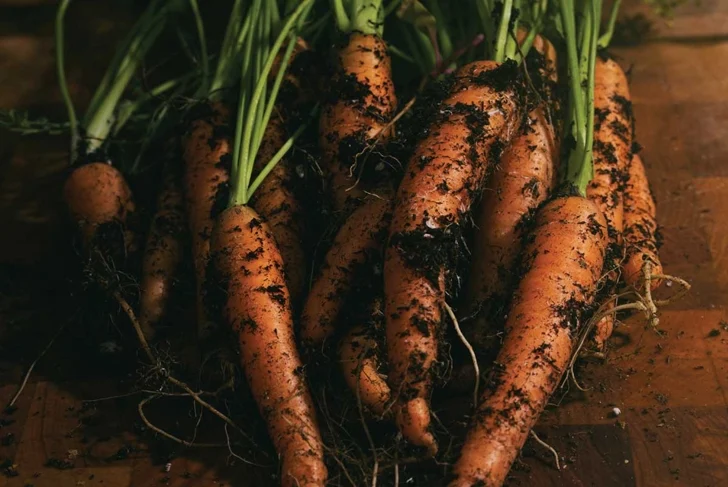Rooted in Place: Reclaiming the Joy and Wisdom of Local Eating
Walk into any modern grocery store and you’ll find an astonishing spread of produce: crisp apples in spring, ripe tomatoes in mid-winter, berries from half a world away. It’s a marvel of convenience—but one that comes at a hidden cost. This global, “everything-all-the-time” food system has distanced us from the rhythms of the natural world, and it’s time we rethink how—and where—we source our food.
Reclaiming a local and seasonal approach to eating isn’t about abandoning convenience or becoming a full-time homesteader. It’s about finding smarter, more connected ways to nourish ourselves—ways that align with our environment, support our communities, and restore meaning to our meals.
Why Local and Seasonal Matters
Distance
The average ingredient in your dinner likely traveled thousands of kilometers to reach your plate. Think snow peas from China or blackberries from Mexico—an enormous fuel and refrigeration footprint just to deliver what could be grown closer to home.
Fragility
Relying on global supply chains makes our food system more vulnerable to disruption—from climate impacts to political instability. A more localized food web is more resilient.
Nutrition and Flavor
Produce harvested prematurely to survive long transport often lacks the flavor and nutrients of fully ripened, just-picked food. In contrast, locally grown crops can shine—both in taste and nourishment.
Connection
Eating in sync with the land and the seasons fosters a deeper sense of place. You begin to notice when the first asparagus appears or celebrate the brief burst of tomato season. It turns food from routine into ritual.
Accountability
When your food comes from down the road instead of across the ocean, there’s a clearer line of sight into how it’s grown, who’s growing it, and how animals and ecosystems are being treated.
Community and Opportunity
Choosing local strengthens regional economies and builds a web of interdependence between farmers, producers, and eaters. It’s also an invitation to rediscover food skills—cooking, preserving, foraging—that reconnect us with self-sufficiency.
Making Local Eating Work—Wherever You Are
Let’s face it: not all of us live in Mediterranean climates with year-round growing seasons. Many of us navigate short summers, harsh winters, or urban settings. But eating more locally isn’t an all-or-nothing endeavor—it’s about thoughtful, flexible steps.
1. Start by Reading Labels
Even in big box stores, produce is labeled with its country (sometimes region) of origin. Be alert to seasonal shifts. The same apples that came from Ontario in October might be from New Zealand by March.
Try this: Define your own “local” radius—maybe 100 miles, your province, or the continental U.S. Stretch it when necessary, but be mindful when foods start traveling from the far side of the globe.
2. Embrace Food Preservation
Our grandparents fed themselves without supermarkets by preserving harvests. Whether it’s canning peaches, freezing berries, drying herbs, or fermenting vegetables, these age-old methods help carry the local bounty into the colder months.
Try this: Choose one preservation technique that intrigues you and invest in the basic tools. Learn through books, YouTube, or better yet, someone in your community.
3. Know Your Place
Each region has its own strengths. Prairie provinces might lean into pulses, grass-fed meats, and root vegetables; coastal communities can thrive on seafood, seaweed, and maritime greens.
Try this: Explore your local pantry for items like flaxseed oil, honey, artisanal grains, or foraged herbs. Let these become your new staples.
4. Cook with the Seasons
Instead of making summer recipes with lackluster winter produce, let the season guide your meals. Roasted root veggies, hearty stews, and preserved fruit can be just as satisfying as fresh salads—if not more so.
Try this: Swap out out-of-season tomatoes for roasted red peppers, dried fruit, or home-preserved jars. Flexibility is key.
5. Tap Into Local Networks
You don’t have to do it all yourself. Farmers’ markets, winter CSAs, and local food delivery boxes often provide pre-preserved or stored items like frozen berries, pickles, or cured meats—letting you eat locally with ease.
Try this: Search for year-round producers or markets in your area. Ask what they offer in the off-season or whether they have discounts for bulk or direct purchases.
Local Living, Real Rewards
Since publishing The 100-Mile Diet, J.B. MacKinnon and Alisa Smith have continued to source about 85% of their food locally. According to MacKinnon, “The food is the greatest reward. I truly feel like I eat like a king.” Surprisingly, they don’t spend like royalty—their food budget is slightly below average.
Their secret? Cooking from scratch, eating simply, embracing seasonal abundance, and reducing meat consumption. And yes, part of the magic is the wait. “Tomato season is like a festival,” says MacKinnon. “It’s a big event in the year for us—something to look forward to.”
Bonus Tip: Forage for Free
Tight budget? Foraging can offer nutrient-dense local food for nothing more than time and attention. From dandelion greens and wild berries to mushrooms and medicinal herbs, nature offers an edible treasure trove—if you know where (and how) to look.

